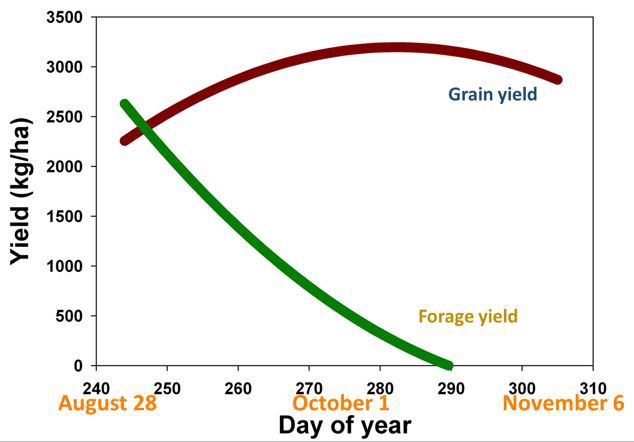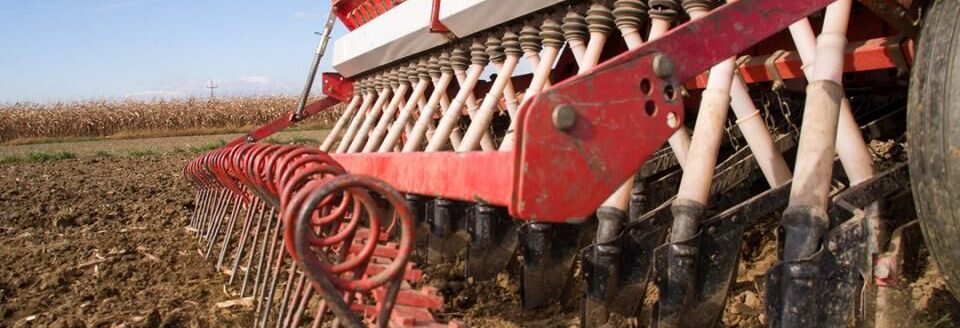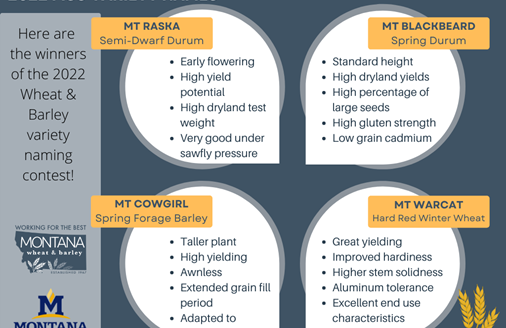With this August setting up similar to last year and the need for wheat pasture for a number of producers this fall, we will likely see drills start rolling in parts of the state by the end of the month. As planting gets going, here are a couple considerations when it comes to planting dates and seeding rates for Oklahoma winter wheat.
Planting date
The optimal window for dual-purpose wheat for most of Oklahoma is between Sept. 10-20 (approximately day 260 in Figure 1). This window represents a trade-off between maximizing forage production while minimizing potential grain yield loss. Earlier planting dates will provide more fall forage potential, but this is usually not recommended unless the wheat is intended to be produced for grazing, or “grazeout.” Planting dates for grain-only producers will be at least two to three weeks later than what is the ideal dual-purpose planting date for your area. For many areas in Oklahoma, this will be around mid-October (approximately day 285 in Figure 1).
Seeding rate
Producers in forage-only or dual-purpose management should plant 1.5-2x the amount of seed that is recommended for grain-only production. For example, data collected in north-central Oklahoma has showed that increasing the seeding rate from 60 to 120 lb/acre can increase fall forage potential by as much as 500 lb/acre for a mid-September planting date (Sept. 11 in Figure 2). The increase in forage potential by using this higher seeding rate can justify the cost of the extra seed. OSU recommends 120 lb seed/acre for most areas of Oklahoma, including irrigated fields in the Panhandle. Seeding rates for dryland fields in the Panhandle for this type of management can be lowered to 90 lb/acre. OSU recommends a 60 lb/acre seeding rate for grain-only production when planted during that optimal mid-October time. Dryland fields in the Panhandle can have their seeding rate lowered to 45 lb/acre. If planting happens to get delayed in November this year, seeding rates will need to increase to provide enough available tillers to still maintain maximum grain yield potential.
More information about dual-purpose wheat management can be found in the fact sheet PSS-2178 Dual-purpose Wheat: Management for Forage and Grain Production.



